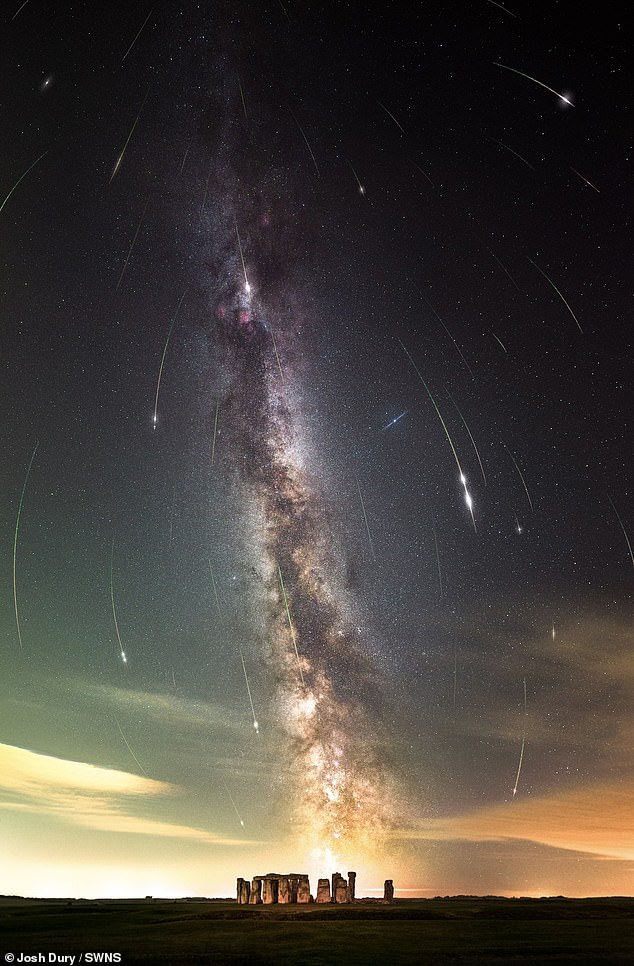Meteorite fragments that lit up the sky around Stonehenge have been captured by a photographer using innovative camera techniques.
The incredible sight was photographed by Josh Dury from Compton Martin, who was able to combine 46 separate images of the Perseid meteor shower over the megalithic structure.
The 26-year-old astrophotographer said: ‘The composition creates a visual narrative of shooting stars ‘raining’ down on Stonehenge.
‘This image was taken over three and a half hours on Friday night (August 9) starting at 10:30 p.m.’
This comes as the Perseid meteor shower peaks this weekend and will likely reach its peak between Sunday night and Monday.
The stunning image combines 43 images of the Perseid meteors as they fell over Stonehenge, Wiltshire.
The Perseids are a prolific meteor shower that is typically visible from mid-July to late August.
It passes through Earth’s atmosphere each year as Earth orbits through debris left behind by Comet Swift-Tuttle.
The comet’s meteoroids, mostly about the size of grains of sand, burn up as they hit Earth’s atmosphere at 36 miles per second, producing a streak of light in the sky.
During its peak each year, viewers can see up to 100 shooting stars every hour.
Maximum temperatures can reach between 1,648 °C and 5,537 °C when they reach the atmosphere.
The meteors are called Perseids because they appear to shoot out from the constellation Perseus.

The photograph was taken by astrophotographer Josh Drury (pictured)

Skywatchers across the UK will be among those able to enjoy the Perseid meteor shower, which occurs when Earth passes through the debris left behind by Comet Swift-Tuttle during its travels through the inner solar system.
Although they officially peak on the evening of August 12, Daniel Brown, associate professor of astronomy at Nottingham Trent University, said it’s worth keeping an eye out for a secondary peak, should one occur.
He said: ‘The meteor shower builds up slowly from mid-July before reaching its peak activity of 100 meteorites per hour on August 12. It then tapers off until mid- to late August.
‘However, in reality, activity can show more complex variations, meaning the spike might not be the only one.
‘The years 2018 and 2020 saw some increased activity one or two days after the main peak.
‘So, in addition to meteor showers not occurring just one night, but slowly increasing and then decreasing over the course of days, it is possible that the most active night is followed by another one a day or two later.’
To make the most of the meteors, experts say observers should avoid well-lit, built-up areas and try to find unobstructed views.
Professor Brown said: “This year, the best time to observe the main peak is in the second half of the night, i.e. the early hours of 13 August. Find a dark spot, out of direct light.”
He said it will take viewers up to 30 minutes to adjust to the darkness.
Professor Brown said: ‘Patience is required and it is best to observe a wide expanse of sky as the meteors will be visible everywhere.’


